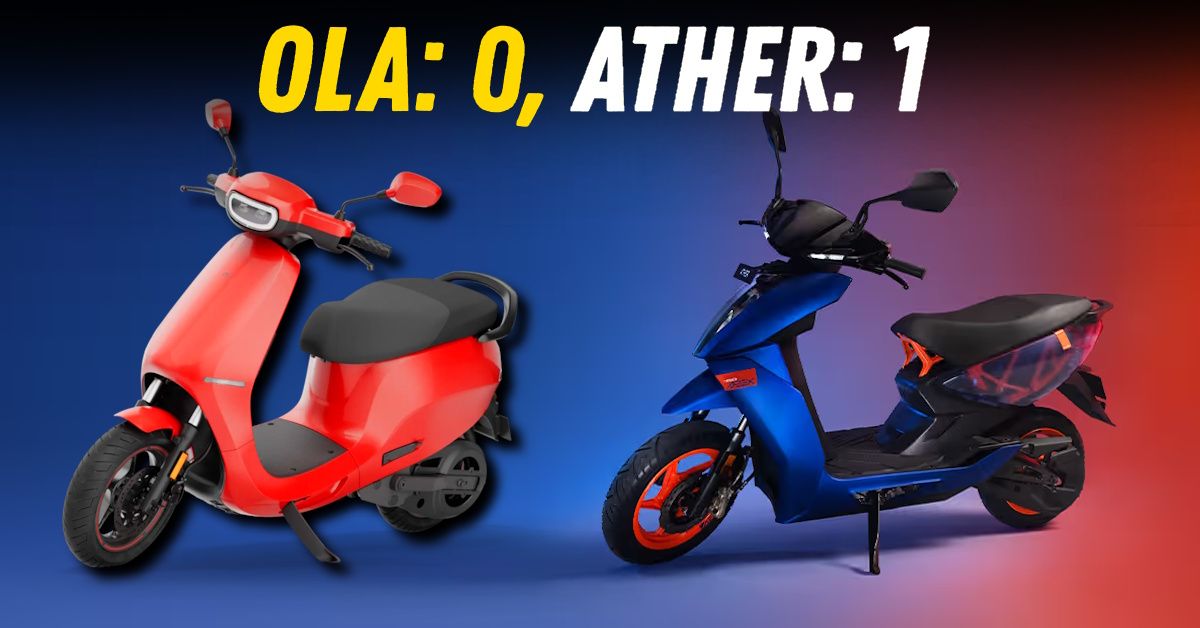Ather More Valuable Than Ola: Here Is Why


The electric scooter revolution in India has reached an intriguing crossroads, where traditional metrics like sales volumes tell only half the story. While Ola Electric continues to dominate market share, a quieter narrative unfolds in boardrooms and investor circles: Ather Energy, the Bengaluru-based EV maker, has outmaneuvered its flashier competitor where it matters most – investor confidence.
Last week’s Rs 1,340 crore anchor investment in Ather Energy’s IPO revealed more than just financial muscle. Marquee names like SBI Mutual Fund, Abu Dhabi’s sovereign wealth fund ADIA, and Franklin Templeton Global bet big at Rs 321 per share – the highest price band. This enthusiasm contrasts sharply with Ola Electric’s stock trajectory, which remains 66% below its peak despite a recent 2% bump from March sales figures.
The numbers behind Ather’s appeal:
• Revenue surged 28% to Rs 1,579 crore in nine months ending December 2024
• Losses narrowed by 25% to Rs 578 crore
• Gross margins doubled to 19% through cost discipline
These aren’t vanity metrics. As one fund manager put it, “Ather’s Rizta model isn’t just selling scooters – it’s selling sustainability in financial reporting.”
Walk into any Team-BHP discussion forum, and you’ll find a pattern. Long-term Ather owners report scooters that “feel new even after 20,000 km”, with battery consistency that outlasts marriage vows. Contrast this with Ola riders navigating a minefield of glitches – from sudden reverse gear activation to motor overheating warnings during hill climbs.
Autocar India’s real-world tests exposed critical differences:
Metric Ather 450X Ola S1 Pro
0-40 kmph acceleration 4.1 seconds 4.9 seconds
True range (Sport mode) 74 km 100 km (but unreliable indicator)
Charging time (0-100%) 4.5 hours 7+ hours
While Ola boasts better specs on paper, its real-world execution falters. The S1 Pro’s vaunted 115 kmph top speed comes with a 15% speedometer error, while Ather’s 80 kmph claim matches reality. For investors, this translates to predictable unit economics versus flashy promises.
Ather’s factory processes have evolved through four generations of scooters. Their recent Gen 3 rollout saw seamless production scaling – a stark contrast to Ola’s February 2025 registration backlog that required months to clear. Supply chain veterans note Ather’s 94% localisation rate against Ola’s 60%, insulating it from import shocks.
The human factor matters too. Ather’s 200+ experience centres offer test rides and service – a physical presence that counters Ola’s app-only sales approach. When registration delays plagued Ola’s direct sales model, Ather leveraged its dealership network to maintain delivery timelines.
Ola’s 30% market share and Gen 3 deliveries show it hasn’t lost the volume game. But as the EV market matures, quality trumps quantity. Ather’s IPO prospectus reveals plans to double R&D spend on battery tech, while Ola grapples with ₹2,100 crore debt from aggressive expansion.
Market whispers suggest institutional investors view Ather as the “Apple of EVs” – premium, ecosystem-driven, and predictably innovative. Ola’s fire-sale discounts and feature bloat (remember the controversial “Auto Reverse” mode?) increasingly paint it as the sector’s fast-fashion player.
In India’s EV race, Ather proves that sustainable valuation isn’t about who makes the most noise, but who builds trust one reliable kilometre at a time. As retail investors queue up for its public offering this week, the message is clear: In the marathon toward electrification, slow and steady might just win the war.